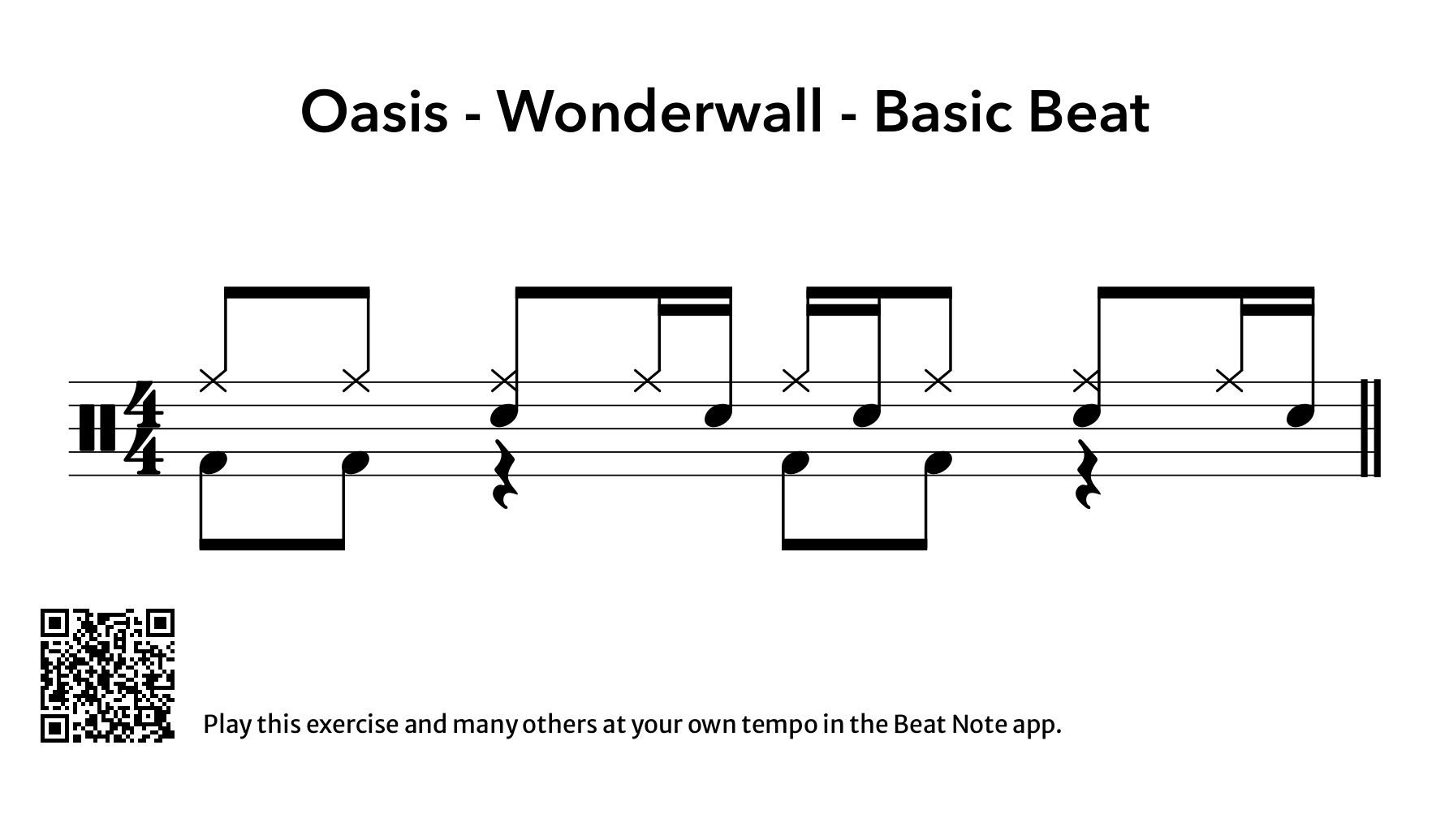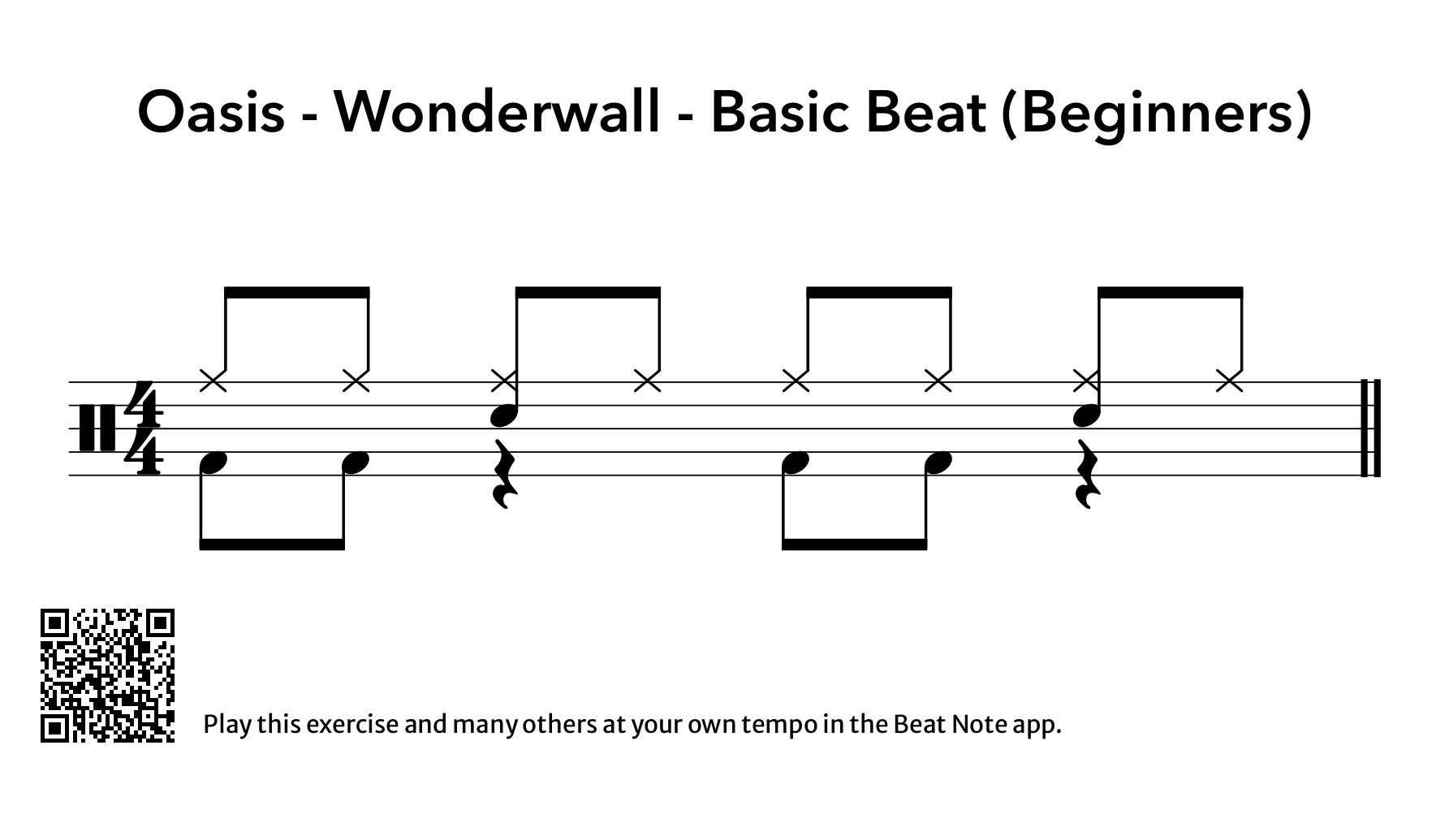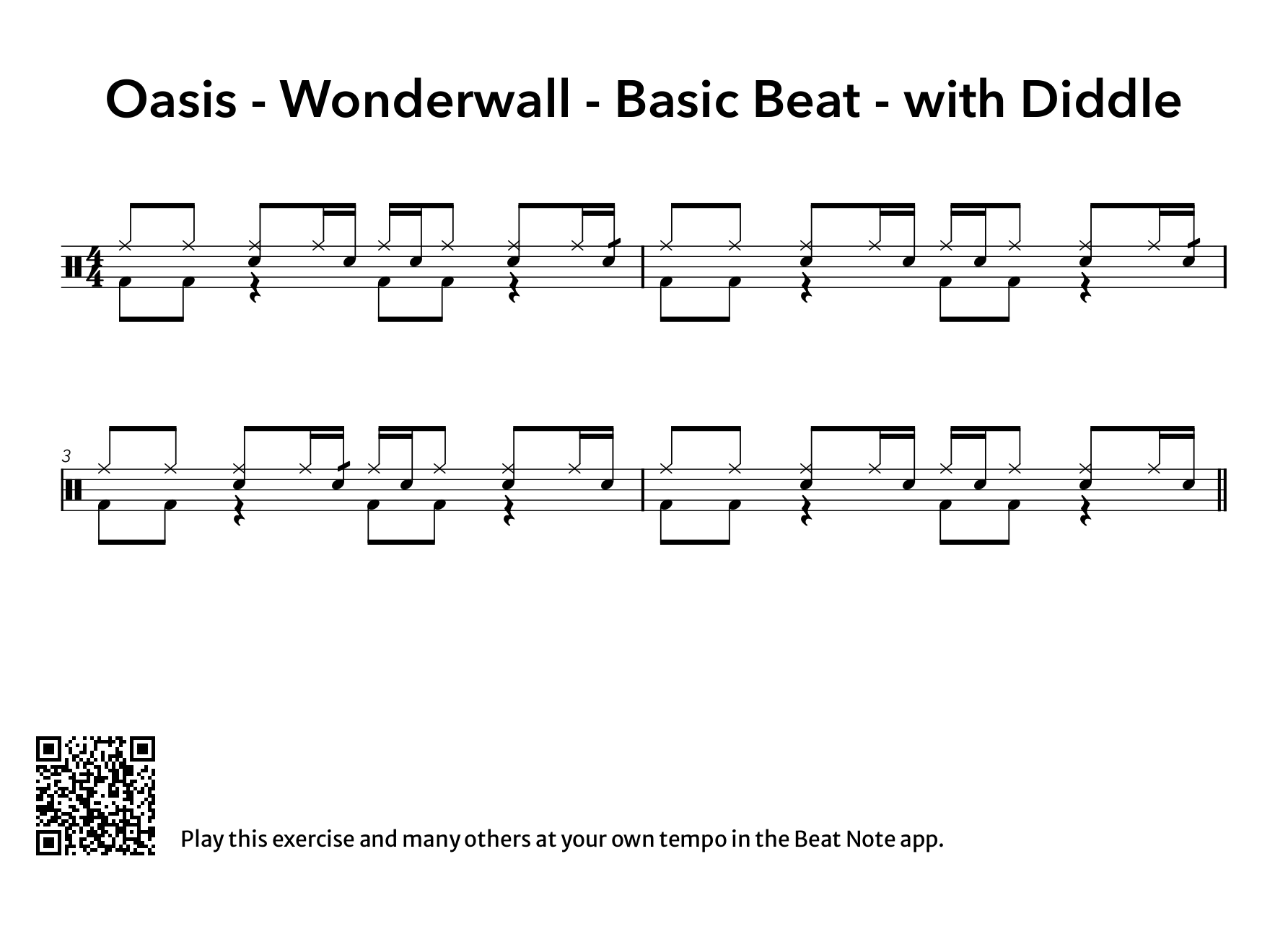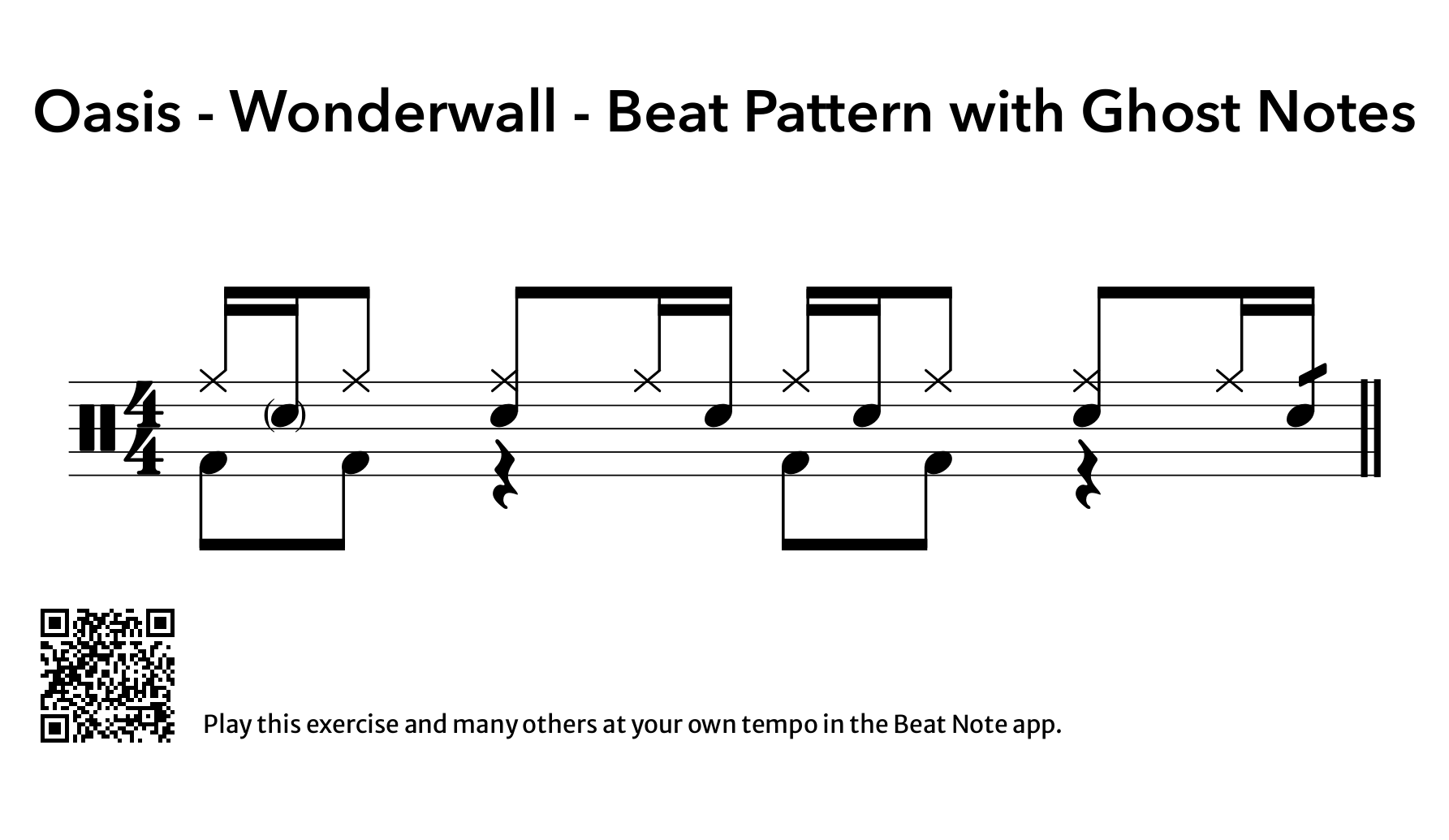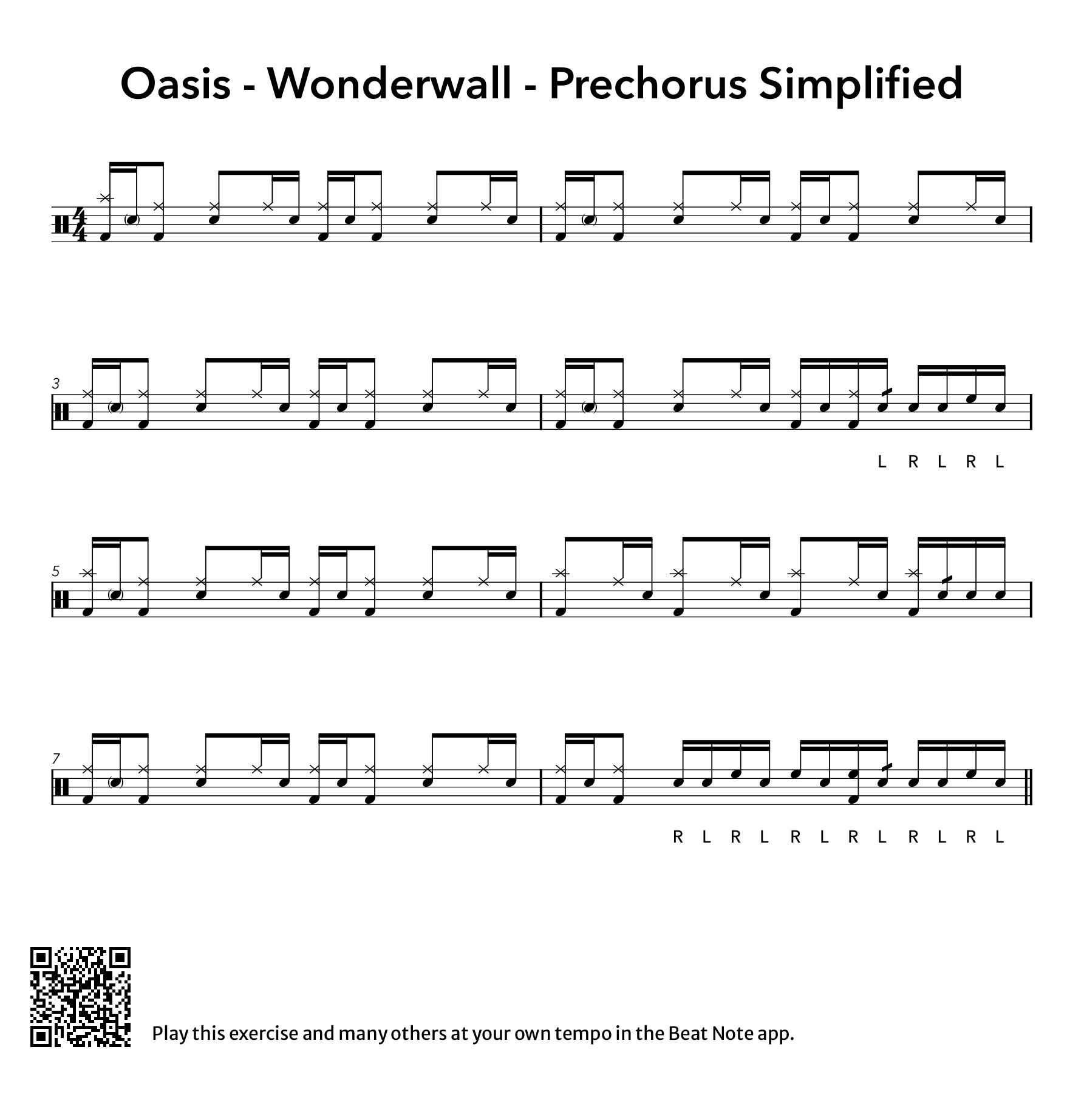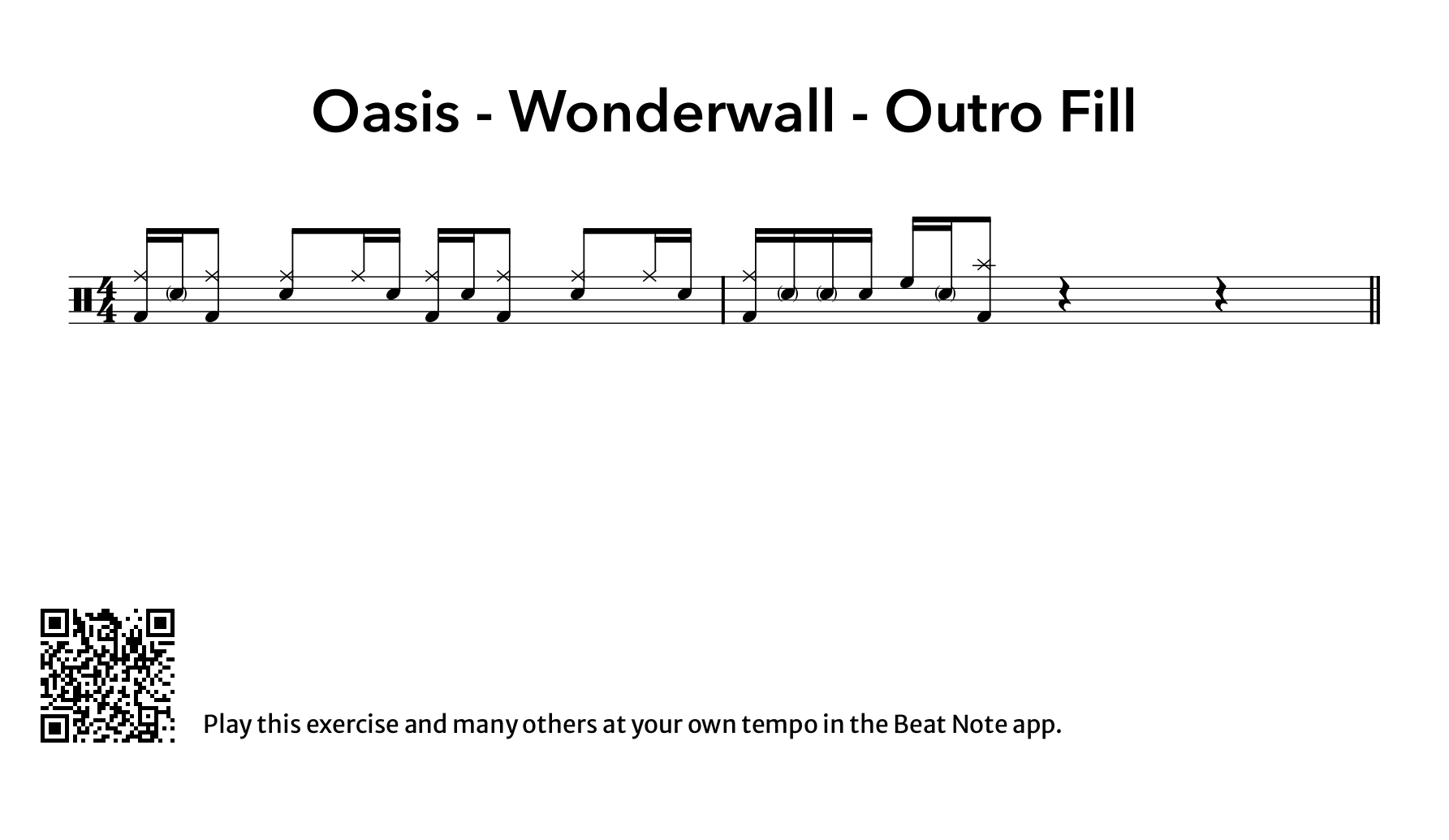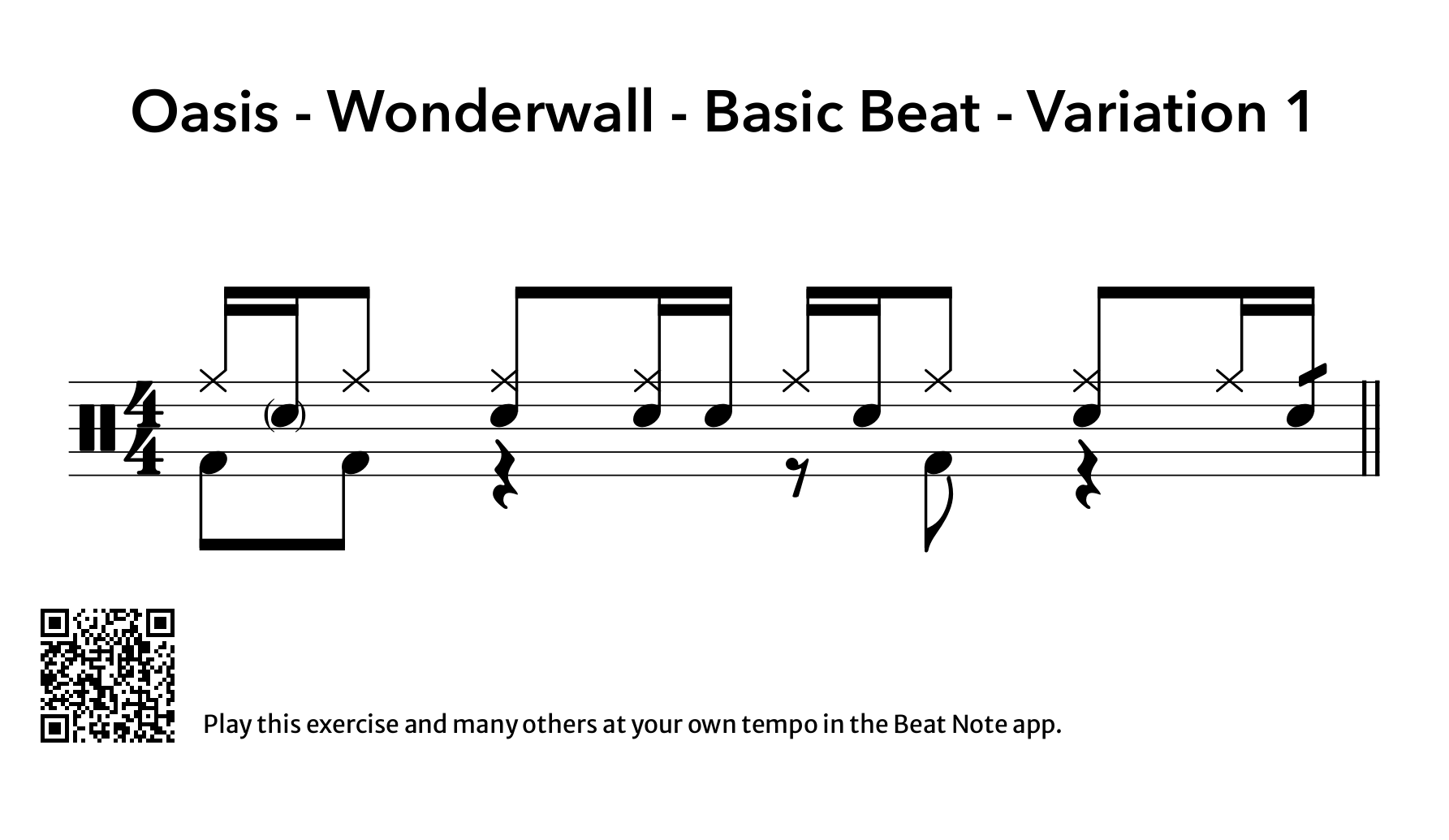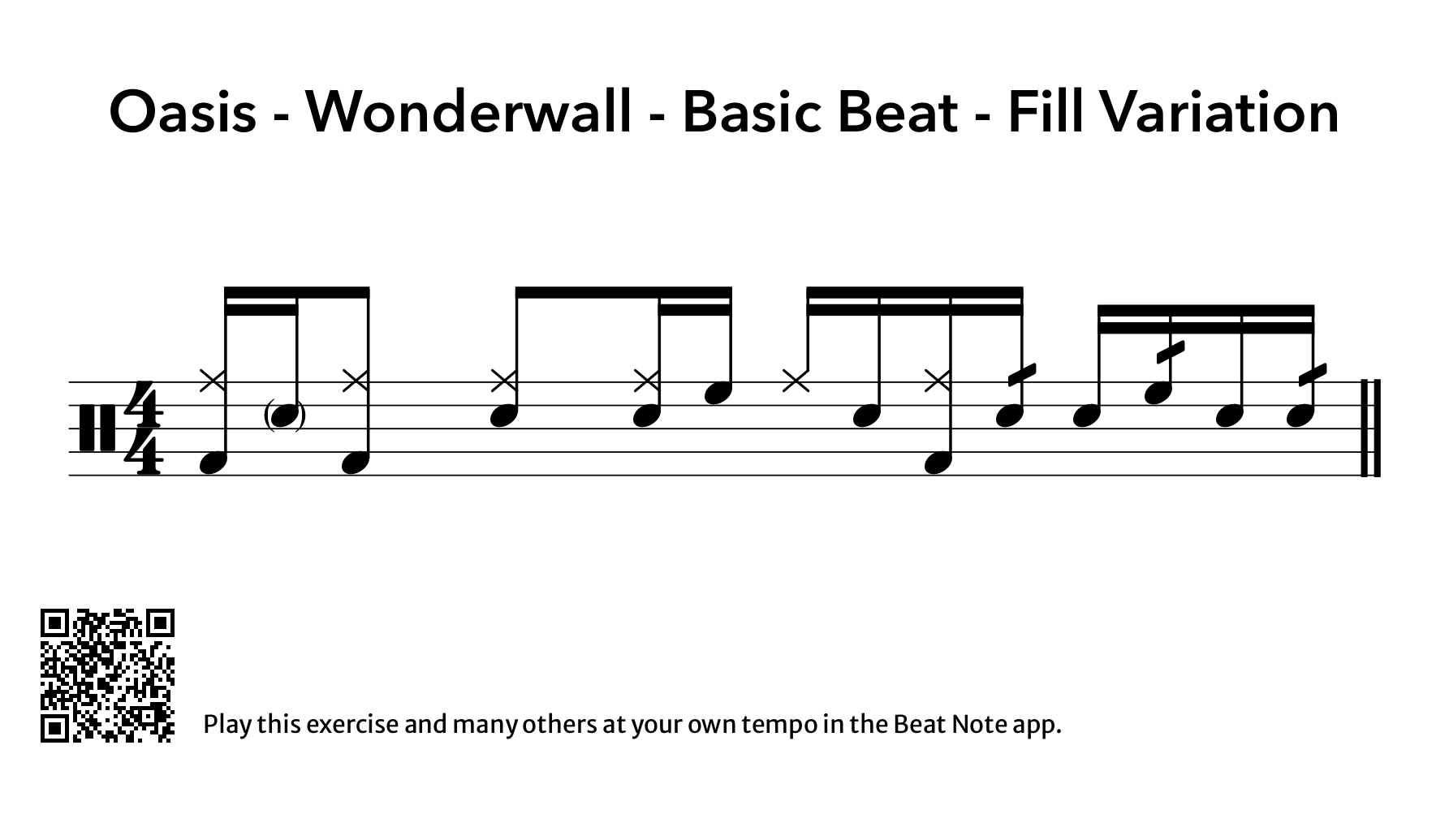Have you ever tried to play Wonderwall on drums and thought, ‘This sounds nothing like the record!’? Don’t worry, you’re not alone. This iconic track may seem simple at first, but nailing that signature groove can be trickier than you’d expect.
Many beginner drummers find themselves puzzled when tackling this ’90s anthem. The rhythm might sound straightforward, but there’s more going on than meets the ear. So, how do you capture that unmistakable feel that’s had crowds swaying for decades? By now, you should have somehow realized what you gotta do: Dig in and break down the drum part step by step, revealing the techniques that give Wonderwall its distinctive sound.
In This Article
Getting Started
Tempo
First things first – let’s talk tempo. “Wonderwall” cruises at a comfortable 87 BPM. This mid-tempo groove allows for a relaxed feel.
Song Structure
Noel Gallagher kept things relatively straightforward when he penned this in 1995. Unlike some rock epics with complex arrangements, “Wonderwall” follows a more radio-friendly structure, albeit with some quirks:
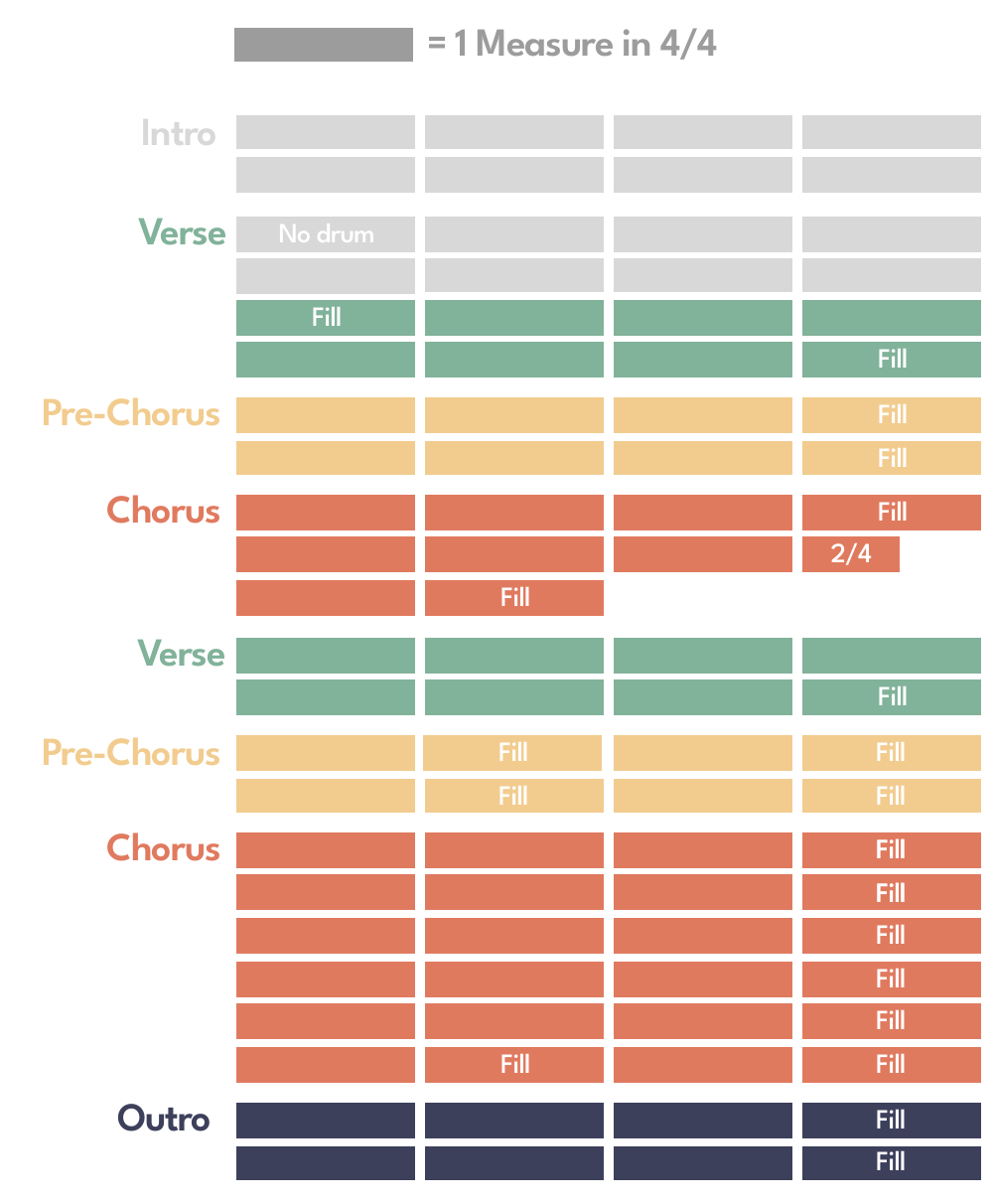
This visual guide will help you navigate the song as we break down each section.
Why Do Drums on Wonderwall Sound So Unique?
One reason the Wonderwall drum sound might seem different is the use of hot rods. Hot rods are a type of drumstick that produces a unique sound. They are made by bundling together several wooden dowels or rods, which creates a more spread-out, less defined sound compared to traditional drumsticks. The use of hot rods contributes to the song’s distinctive, laid-back feel.
Basic Beat
The majority of Intro, Verse, Pre-Chorus and Chorus all use some variant of the basic beat. The basic beat is not the most straight forward beginners’ beat, but see if you can practice it that way.
Oasis - Wonderwall - Basic Beat
This is the basic beat for Wonderwall. There are straight 8th notes on the ride. Pay attention to the snare on the a-of-2 and the a-of-4. These are what makes this beat so recognizable.
Open Oasis - Wonderwall - Basic Beat in Drum Notation by Beat Note to change the tempo
If this beat is too challenging, don’t worry. The simplified beginner version should be manageable even for new drummers. Start by playing this groove throughout the song. And if you’re looking for other songs suitable for beginners, check out our Beginner-Friendly Drumming Songs post.
Oasis - Wonderwall - Basic Beat (Beginners)
This is the most basic beat for Wonderwall. Straight 8th notes on the ride. Kick on 1 and the and-of-1, as well as 3 and the and-of-3. Snare on 2 and 4.
Open Oasis - Wonderwall - Basic Beat (Beginners) in Drum Notation by Beat Note to change the tempo
Drum Pattern Refinements
It’s The Diddle That Makes Wonderwall
Once you have the basic beat down, let’s add that iconic diddle at the beginning of the beat. It’s a small detail but gives “Wonderwall” its distinctive groove. Alan White sprinkles it in wherever it seems fitting. There is no discernible pattern; sometimes, it’s repeated every measure, sometimes, every few measures. It’s often played before the two kick drum hits:
Oasis - Wonderwall - Beat with Diddle
Add the diddle either on the a-of-4 right before the next measure starts, or on the a-of-2. Again, there’s no set pattern. Experiment adding it whenever it feels right.
Open Oasis - Wonderwall - Beat with Diddle in Drum Notation by Beat Note to change the tempo
If you’re not used to seeing diddles in drum notation, we have a Guide to Drum Notation that goes through all the drum notation you’ll need to read these beats, including Ghost Notes, which we’ll cover next:
Ghost Notes
To add some finesse to your playing, let’s introduce ghost notes on the snare between the bass drum hits at the beginning of the measure. These subtle hits add depth to the groove without overpowering the main beat. Alan Watts uses them almost consistently, so I’d add them in for each measure.
Oasis - Wonderwall - Beat with Ghost Notes
Play the ghost note on the Snare on each e-of-1.
Open Oasis - Wonderwall - Beat with Ghost Notes in Drum Notation by Beat Note to change the tempo
Drum Fills
“Wonderwall” doesn’t call for flashy fills. But practicing one straightforward one will elevate your playing significantly. It’s worth practicing it, as it uses simple linear R L R L sticking and only involves the Snare and High Tom, making it the perfect beginner fill.
Oasis - Wonderwall - Simple Fill
The beginning of the measure is our usual pattern. The fill really starts on the a-of-3 with a diddle. If playing diddles is too hard, just play a normal snare hit. The last note are sixteenth played Snare - Snare - Tom - Snare with alternating strokes, giving the fill this particular Wonderwall feel.
Open Oasis - Wonderwall - Simple Fill in Drum Notation by Beat Note to change the tempo
Wonderwall Song Sections
▬ Intro and Verse
The first 46 seconds of the song are easy. Just hang back and do nothing! The drum part of the intro kicks in after 8 measures intro and the first 8 measures of the first verse with a fill:
Oasis - Wonderwall - Intro Fill
The intro enters with a fill that consists of a flam on beat 4 followed by a double on snare. End the fill with a crash on the 1 of the new measure. The drum pattern slightly deviates from the normal but you can just proceed with the basic fill pattern we looked at above.
Open Oasis - Wonderwall - Intro Fill in Drum Notation by Beat Note to change the tempo
▬ Pre-Chorus
The Pre-Chorus is arguably the hardest part of the song, for a few reasons: One, Alan White deviates from his usual pattern and shifts around the backbeat at times. Two, there is this measure playing along the line “There are many things that I would like to say to you…” where the Crash accents the words like - say - you - don’t on the quarter notes. And third, the final fill is a whole measure long rather than the usual short quarter note fill. Let’s look at it the way it’s played on the recording:
Oasis - Wonderwall - Prechorus
The last three measures make this pre-chorus harder. Note the crash on every note in measure 6, the shifted backbeat in measure 7 and the fill in the last measure.
Open Oasis - Wonderwall - Prechorus in Drum Notation by Beat Note to change the tempo
We can simplify this pre-chorus without deviating too much from the feel of the original playing:
Oasis - Wonderwall - Prechorus Simplified
We play the usual pattern in measures 1, 2, 3, 5, and 7. The fill in measure 4 is simplified, as is the one in the last measure. Try and keep the crashes to accentuate the words in measure 6.
Open Oasis - Wonderwall - Prechorus Simplified in Drum Notation by Beat Note to change the tempo
▬ Chorus
The most confusing part of the song is the pause at the end of the first chorus. If you’ve been counting 1-2-3-4, all of a sudden you’ll feel that the counting is off. That’s because there are two extra beats inserted, which we’ll notate as a measure in 2/4 time. Here are the last six measures of the chorus including this odd pause:
Wonderwall's Drum Break: Chorus 1 Ending
The second measure has a slightly different feel because of the double stroke on the and-of-2. Notice how after the measure in 2/4 time there’s a crash, followed by a one measure pause. The iconic fill kicks in at the and-of-1 in the last measure to launch the second verse.
Open Wonderwall's Drum Break: Chorus 1 Ending in Drum Notation by Beat Note to change the tempo
Outro
Just like the chorus before, the outro is really just a bunch of variations of the drum fill and the basic drum pattern. It ends with a simple fill two and a half beats long:
Oasis - Wonderwall - Outro Fill
The outro fill follows the basic beat pattern with a linear fill on Snare and High Tom.
Open Oasis - Wonderwall - Outro Fill in Drum Notation by Beat Note to change the tempo
Drum Pattern Variations: Adding Complexity to Your Playing
With the beat patterns so far, you should be able to play the song from start to finish. If you listen to Alan White’s playing, however, you find that he barely sticks to the basic beat pattern; instead, he improvises his playing, which makes the drumming sound so endearingly dynamic. I’ll list a few variations of the main pattern. Use this as inspiration to switch things up.
Oasis - Wonderwall - Beat Variation 1
This beat omits the bass drum on 3 and instead plays the snare on the and-of-2 turning it briefly into a simple syncopated snare beat. This is used in the original Pre-Chorus that we covered above.
Open Oasis - Wonderwall - Beat Variation 1 in Drum Notation by Beat Note to change the tempo
Oasis - Wonderwall - Beat Variation 2
This beat expands this idea of the syncopated snare through the end of the measure.
Open Oasis - Wonderwall - Beat Variation 2 in Drum Notation by Beat Note to change the tempo
Oasis - Wonderwall - Fill Variation
Alan clearly loves his diddles. The a-of-2 here switches out the Snare for the High Tom compared to the variations before. In addition you play the usual fill but with diddles on the a-of-3, e-of-4 and a-of-4
Open Oasis - Wonderwall - Fill Variation in Drum Notation by Beat Note to change the tempo
Practice Tips
Use a Metronome
You should be able to play the usual bear pretty quickly. Set your metronome to 70 BPM and gradually increase the tempo as you get comfortable. Consistency is key with “Wonderwall” – it’s all about the groove.
For the fills and variations, take it one at a time. Especially some of the more complex fills will require you to start even slower. I’d recommend you play three measures of the regular beat and finish with one of the fills or variations when practicing. Raise the tempo slowly, and you should soon be able to add these fills and variations.
Serve the Song
“Wonderwall” isn’t about flashy drumming – it’s about creating a solid foundation for one of the most iconic songs in British rock history. Focus on maintaining a steady groove and serving the song. As you practice, you’ll find that the real challenge (and joy) of “Wonderwall” is its subtlety and consistency.
If you play with a band without the original track in the background, your bandmates will more likely compliment your steady rhythm than any complex variation.
In that spirit, keep on rocking!
